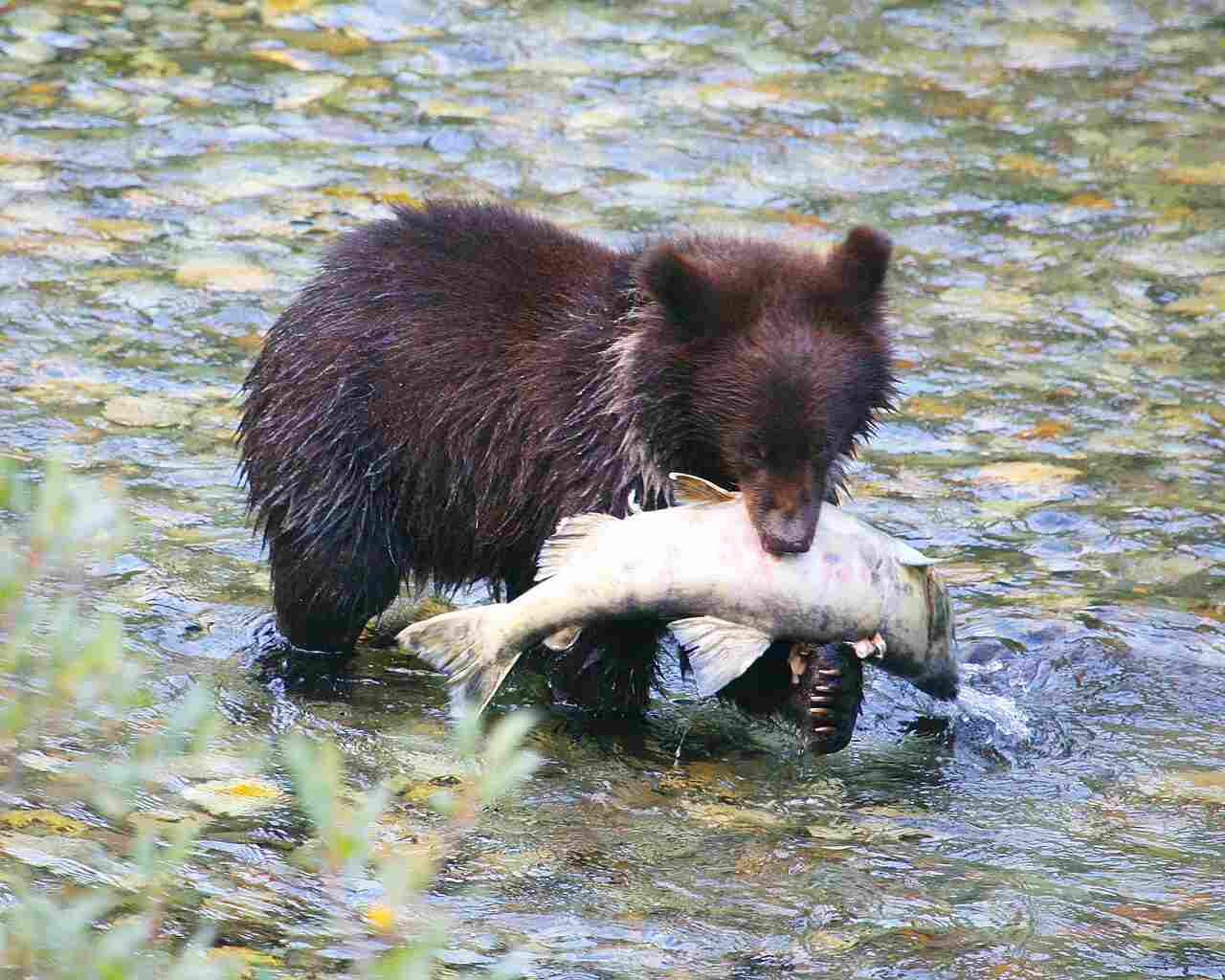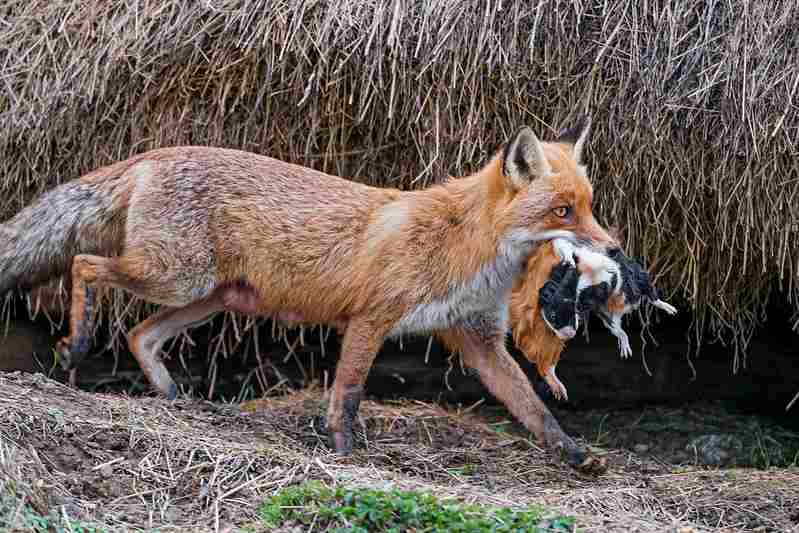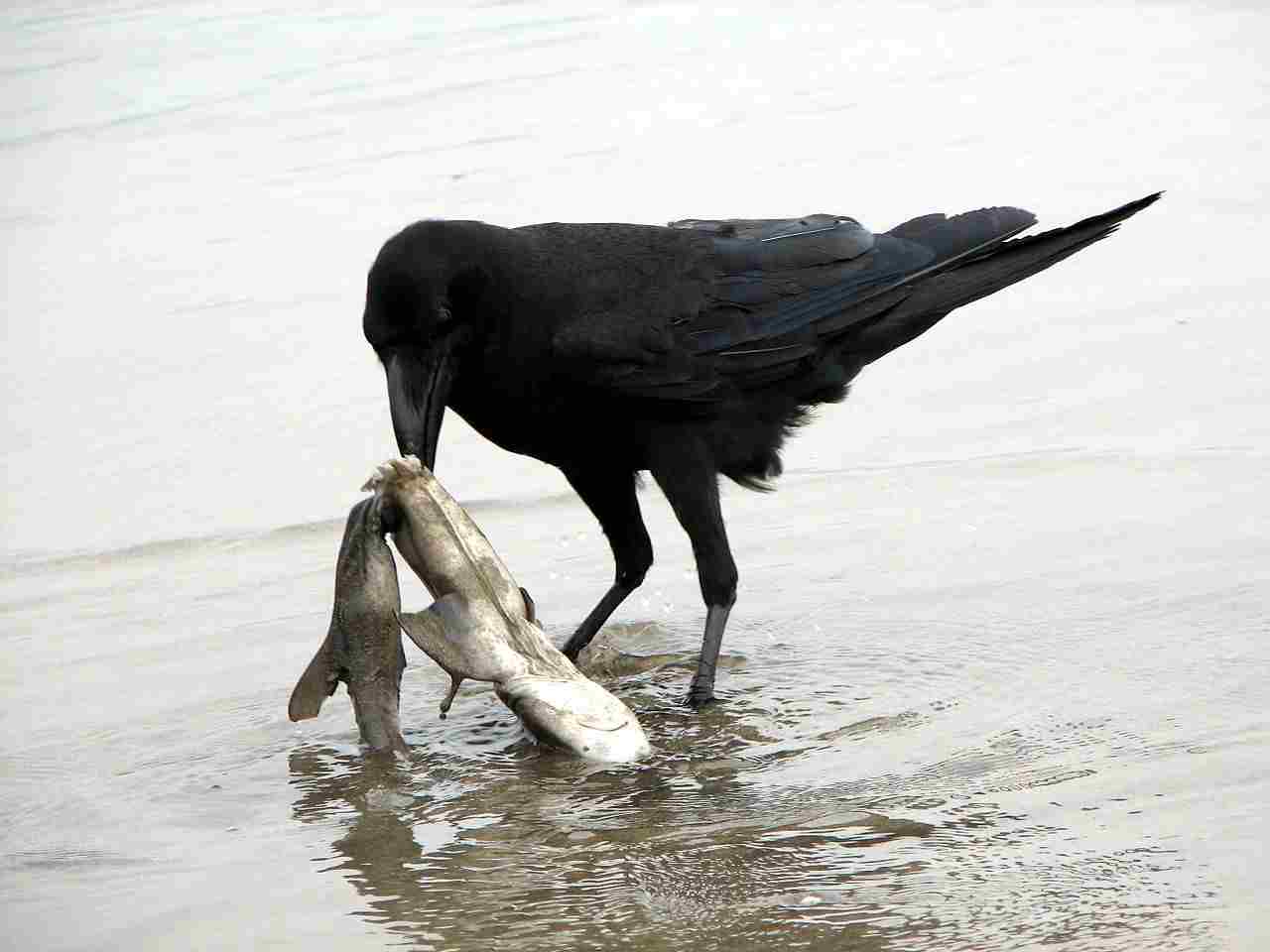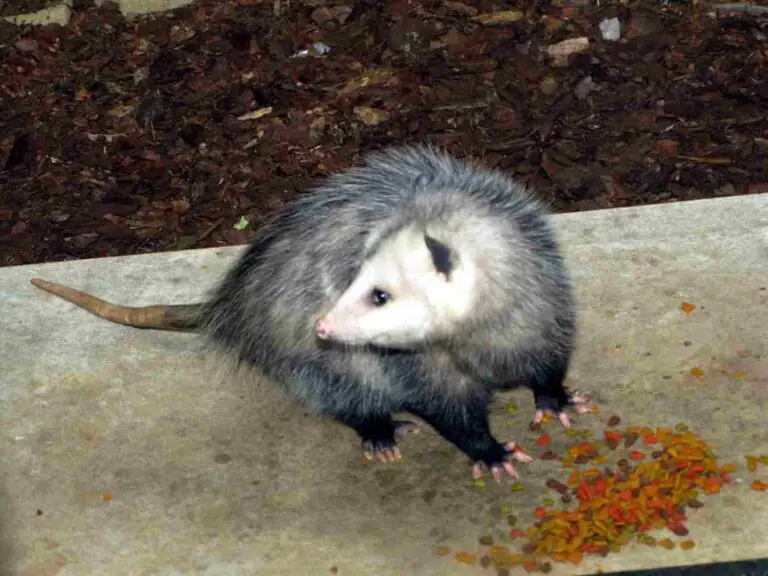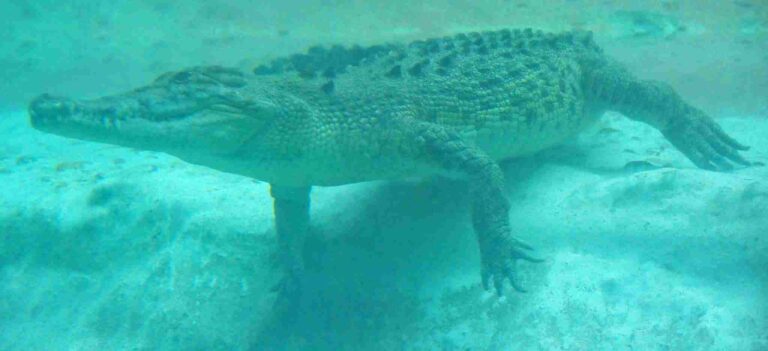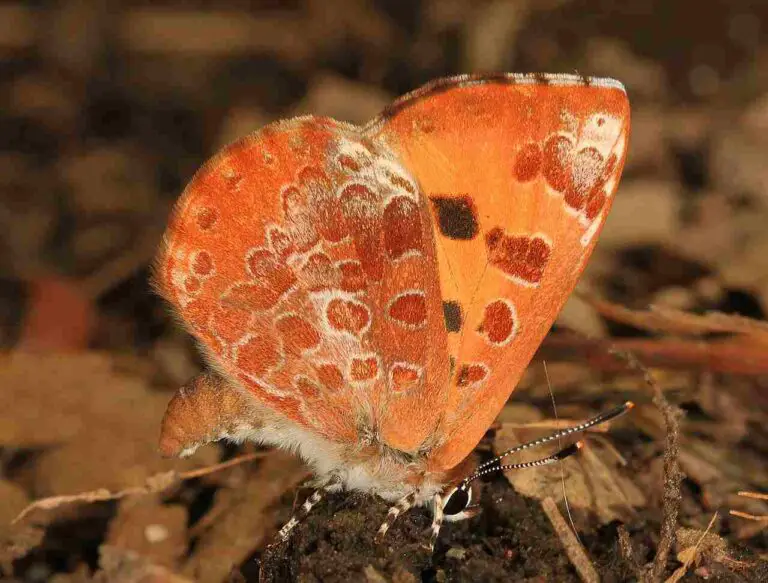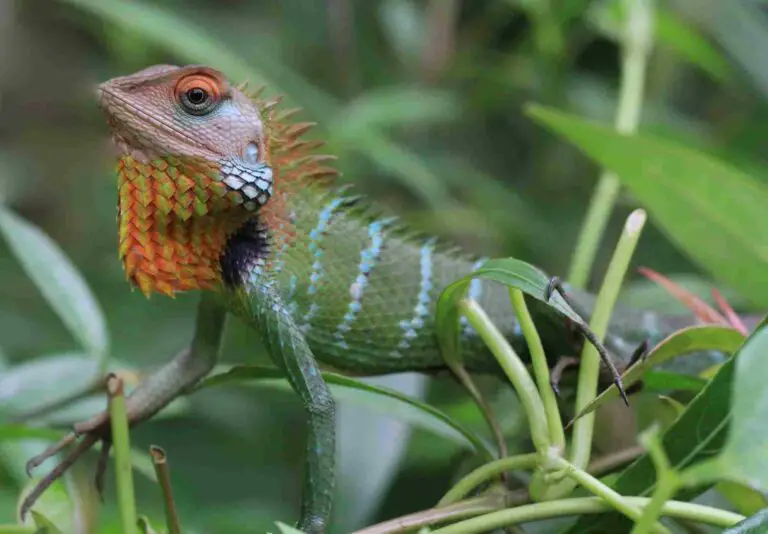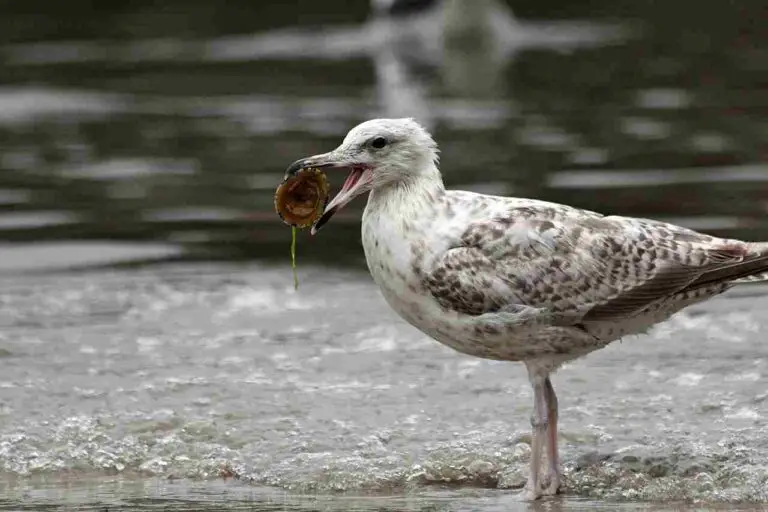Is a Spider a Consumer? An Overview of The Trophic Role/Position of Spiders
Spiders are classified as consumers because they rely on other organisms for their nutrition and energy. They do not have the ability to synthesize their own biomass, so they must obtain it from external sources.
This makes them dependent on other organisms for their survival. Spiders are known for their predatory and carnivorous behavior, feeding on a variety of insects and other small animals. This behavior is one of the reasons why they are classified as secondary consumers.
In the food chain, primary consumers feed on producers, such as plants, while secondary consumers feed on primary consumers. Spiders fall into the category of secondary consumers because they feed on insects and other small animals that are primary consumers. Their relatively small size and trophic effect also contribute to their classification as secondary consumers.
Reasons Why a Spider is a Consumer
1. It Does Not Synthesize Its Own Biomass
Spiders, unlike producers, do not synthesize their own biomass. This means that they do not have the ability to produce their own food through photosynthesis or any other means. Instead, spiders rely on other organisms for their nutrition and energy needs.
Spiders are classified as consumers because they obtain their energy by consuming other organisms. They are part of the food chain and play an important role in maintaining the balance of ecosystems.
As predators, spiders primarily feed on insects and other small arthropods. They use their specialized mouthparts to inject venom into their prey, immobilizing them and making it easier to consume. This predatory behavior is one of the main reasons why spiders are considered consumers.
In addition to insects, some spider species also feed on other spiders, small vertebrates, and even other arachnids. This diverse diet further highlights their role as consumers in the ecosystem.
Spiders are not primary consumers because they do not directly consume plants or their products. Instead, they feed on other animals, making them secondary consumers.
Secondary consumers are organisms that feed on primary consumers or other secondary consumers. They occupy a higher trophic level in the food chain and play a crucial role in regulating populations of lower-level consumers.
There are several reasons why spiders are classified as secondary consumers. Firstly, their predatory and carnivorous behavior sets them apart from primary consumers that primarily feed on plants. Secondly, spiders are relatively small in size compared to other predators, which limits their trophic effect on the ecosystem. Lastly, spiders themselves can fall prey to other low-level consumers, further reinforcing their position as secondary consumers.
2. Spiders Do Not Directly Facilitate Decomposition
Spiders, despite their role as consumers, do not directly facilitate decomposition in ecosystems. While it is true that spiders may consume dead animals, such as insects, this behavior is not very common and can be better described as scavenging rather than a decomposer function.
Decomposers play a central role in the process of biodegradation by breaking down organic matter and returning nutrients to the soil. Examples of decomposers include bacteria, fungi, and certain types of insects. These organisms have specialized enzymes that allow them to break down complex organic compounds into simpler forms that can be absorbed by plants and other organisms.
Spiders, on the other hand, do not possess the necessary enzymes or digestive systems to efficiently break down organic matter. While they may occasionally consume dead animals, their primary role in the ecosystem is as predators, feeding on live prey. This means that spiders do not actively contribute to the decomposition process.
Instead, spiders play a different ecological role by controlling populations of insects and other small arthropods. By preying on these organisms, spiders help to regulate their numbers and prevent outbreaks that could have negative impacts on ecosystems. This predatory behavior is essential for maintaining the balance of populations within an ecosystem.
It is important to note that while spiders may occasionally scavenge on dead animals, their contribution to decomposition is relatively minor compared to true decomposers. Their primary function is to consume live prey, and any consumption of dead animals is more opportunistic in nature.
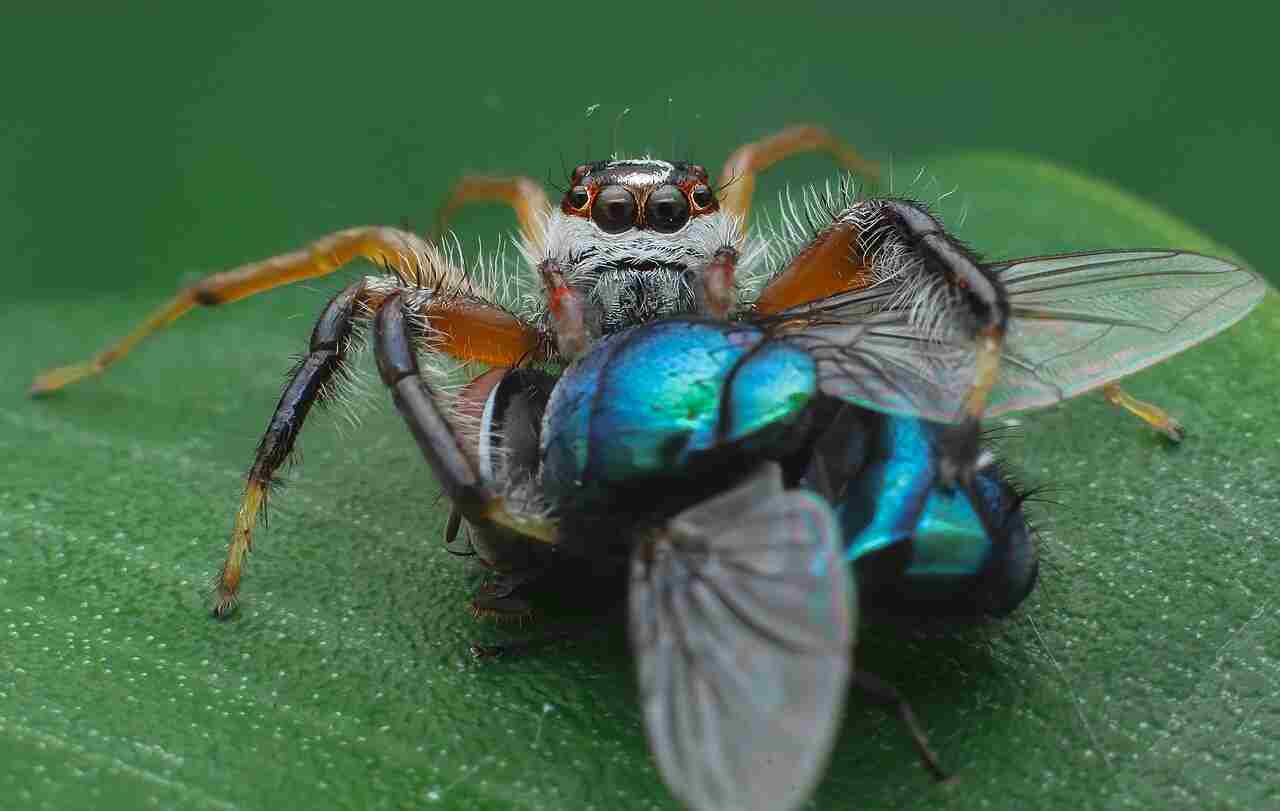
3. Nutrition for Spiders Depends on Other Organisms
Spiders, as consumers, rely on other organisms for their nutrition and energy. Their primary source of sustenance comes from feeding on other organisms, most commonly through predation.
Spiders are skilled hunters, using their webs or stealthy movements to capture their prey. They have specialized adaptations that allow them to immobilize and consume their victims. Once caught, spiders inject their prey with venom to paralyze or kill them, making it easier to consume. This predatory behavior is crucial for spiders to obtain the necessary nutrients and energy they need to survive and reproduce.
The diet of spiders varies depending on their species and habitat. Some spiders primarily feed on insects, while others may consume small vertebrates or even other spiders. They are opportunistic feeders, taking advantage of any available food source that comes their way. This adaptability allows spiders to thrive in a wide range of environments and ecosystems.
Spiders have evolved to be efficient predators, with their bodies and behaviors adapted for capturing and consuming prey. Their fangs and venom glands are specialized structures that enable them to subdue and digest their prey. Once a spider has immobilized its prey, it uses its fangs to inject digestive enzymes into the victim’s body. These enzymes break down the prey’s tissues, turning them into a liquid that the spider can then suck up.
In addition to their predatory nature, some spiders also engage in cannibalism. This means that they may consume other spiders, including members of their own species. Cannibalism can occur for various reasons, such as competition for resources or mating opportunities. While not all spiders exhibit cannibalistic behavior, it is a common phenomenon in many species.
Overall, the nutrition of spiders is dependent on their ability to capture and consume other organisms. Their predatory behavior allows them to obtain the necessary nutrients and energy for their survival. By preying on other organisms, spiders play an important role in maintaining the balance of populations within ecosystems. They help control the populations of insects and other small arthropods, preventing outbreaks and ensuring the overall health of the ecosystem.
What Type of Consumer is a Spider?
Spiders can be described as predatory and carnivorous consumers in most cases. They exhibit predatory behavior by actively hunting and capturing their prey. With their specialized adaptations, such as webs or stealthy movements, spiders are skilled hunters that immobilize and consume their victims. This predatory nature allows them to obtain the necessary nutrients and energy they need to survive and reproduce.
As carnivorous consumers, spiders primarily feed on other organisms. Their diet varies depending on their species and habitat, but most commonly, they feed on insects. Some spiders may even consume small vertebrates or other spiders. They are opportunistic feeders, taking advantage of any available food source that comes their way. This adaptability allows spiders to thrive in a wide range of environments and ecosystems.
Spiders have evolved to be efficient predators, with their bodies and behaviors adapted for capturing and consuming prey. Their fangs and venom glands are specialized structures that enable them to subdue and digest their prey. Once a spider has immobilized its prey, it uses its fangs to inject digestive enzymes into the victim’s body. These enzymes break down the prey’s tissues, turning them into a liquid that the spider can then suck up.
In addition to their predatory nature, some spiders also engage in cannibalism. This means that they may consume other spiders, including members of their own species. Cannibalism can occur for various reasons, such as competition for resources or mating opportunities. While not all spiders exhibit cannibalistic behavior, it is a common phenomenon in many species.
Overall, spiders can be classified as predatory and carnivorous consumers. They rely on their hunting skills and specialized adaptations to capture and consume other organisms. By preying on other organisms, spiders play an important role in maintaining the balance of populations within ecosystems.
Are Spiders Primary Consumers?
Spiders are not generally classified as primary consumers, as they are ratherconsidered secondary consumers. This means that they occupy a trophic level directly above the primary consumers in the food chain.
As secondary consumers, spiders contribute to the energy transfer from the primary consumers to higher-level consumers. They obtain their nutrition by preying on other organisms, primarily insects. Spiders are skilled hunters, using their specialized adaptations to capture and consume their prey. Their predatory behavior allows them to obtain the necessary nutrients and energy they need to survive and reproduce.
It is worth noting that there is one species of spider, called Bagheera kiplingi, that can be considered eligible to be called a primary consumer. This spider’s diet has a high proportion of plant matter, making it unique among spiders. However, even Bagheera kiplingi is not exclusively herbivorous. It still supplements its diet with other food sources, such as nectar and ant larvae.
In general, there are no known spiders that are exclusively herbivorous. Spiders primarily rely on other organisms as their source of nutrition. Their predatory nature and feeding habits make them well-suited to consume other animals, particularly insects. This adaptability allows spiders to thrive in a wide range of environments and ecosystems.
Spiders are important contributors to the balance of populations within ecosystems. By preying on other organisms, they help regulate the populations of their prey species. This, in turn, has cascading effects on the entire food web. Spiders play a crucial role in controlling insect populations, which can have significant impacts on plant health and overall ecosystem dynamics.
Is a Spider a Secondary Consumer?
Yes, in most cases, a spider can be classified as a secondary consumer. This is because spiders are carnivorous and predatory in nature. They obtain their nutrition by preying on other organisms, primarily insects.
Spiders are skilled hunters, using their specialized adaptations to capture and consume their prey. Their predatory behavior allows them to obtain the necessary nutrients and energy they need to survive and reproduce. They play a crucial role in controlling insect populations, which can have significant impacts on plant health and overall ecosystem dynamics.
In the food chain, primary consumers are organisms that directly consume producers, such as plants. Secondary consumers, on the other hand, feed on primary consumers. Spiders occupy a trophic level directly above the primary consumers, making them secondary consumers.
Spiders are not generally classified as primary consumers because they do not rely on plants as their primary source of nutrition. While there is one species of spider, called Bagheera kiplingi, that has a high proportion of plant matter in its diet, it still supplements its diet with other food sources, such as nectar and ant larvae. Therefore, even Bagheera kiplingi is not exclusively herbivorous and can be considered a secondary consumer.
It is important to note that spiders are not exclusively secondary consumers. Some spiders can also be tertiary consumers, depending on their position in the food chain. Tertiary consumers are organisms that feed on secondary consumers. However, the majority of spiders fall into the category of secondary consumers due to their predatory and carnivorous behavior.
Spiders are an essential part of ecosystems as secondary consumers. They contribute to the energy transfer from primary consumers to higher-level consumers. By preying on other organisms, particularly insects, spiders help regulate the populations of their prey species. This helps maintain the balance of populations within ecosystems and has cascading effects on the entire food web.
Why Spiders are Classified as Secondary Consumers
1. Predatory and Carnivorous Behavior
One of the main reasons why spiders are considered secondary consumers is their predatory and carnivorous behavior. Spiders are known for their ability to hunt and capture prey, which typically consists of insects and other small invertebrates. This predatory behavior places them in the secondary consumer category within the trophic pyramid.
Spiders have evolved a wide range of hunting strategies and techniques to capture their prey. Some species build intricate webs to trap unsuspecting insects, while others rely on stealth and agility to pounce on their victims. Regardless of the method, spiders are highly efficient predators, using their venomous fangs to immobilize and digest their prey.
By consuming other organisms, spiders obtain the energy and nutrients they need to survive and reproduce. They play a crucial role in controlling populations of insects and other arthropods, helping to maintain the balance of ecosystems. This makes them an important part of the food web and highlights their position as secondary consumers.
In addition to their predatory behavior, spiders are also considered carnivorous. This means that their diet consists primarily of animal matter, such as insects, other spiders, and small vertebrates like lizards or frogs. Their carnivorous nature further reinforces their classification as secondary consumers.
Spiders are well-adapted to their role as predators. They possess specialized structures, such as silk-producing glands and venom glands, which aid in capturing and subduing their prey. Their ability to inject venom not only immobilizes their victims but also aids in the digestion process, allowing spiders to extract nutrients from their prey more efficiently.
It is important to note that while spiders are primarily carnivorous, there are some exceptions to this rule. Some species of spiders have been observed consuming plant matter, such as nectar or pollen, in addition to their regular diet of insects. However, these instances are relatively rare and do not significantly alter their classification as secondary consumers.
2. Relatively Small Size and Trophic Effect
Another reason why spiders are classified as secondary consumers is their relatively small size and trophic effect.
Spiders, compared to tertiary consumers, occupy a lower trophic level in the food chain. This means that they feed on primary consumers, such as insects, rather than directly consuming the producers or plants. Their position as secondary consumers is determined by their feeding habits and the energy flow within the ecosystem.
Due to their small size, spiders have a limited trophic effect on the overall energy transfer within the food web. While they play a crucial role in controlling populations of insects and other arthropods, their impact on the energy flow is not as significant as that of larger predators. This is because spiders consume relatively smaller prey and do not require as much energy to sustain themselves.
However, despite their smaller size, spiders still contribute to the overall stability and functioning of ecosystems. By preying on primary consumers, they help regulate the population sizes of these organisms, preventing them from becoming too abundant and potentially causing imbalances in the ecosystem. This indirect influence on the trophic dynamics further supports their classification as secondary consumers.
In addition to their trophic position, the relatively small size of spiders also affects their role as secondary consumers. Their size allows them to access and capture prey that may be inaccessible to larger predators. This gives them an advantage in hunting and consuming smaller organisms, which are often abundant in ecosystems.
Furthermore, the small size of spiders enables them to occupy various niches within the environment. They can inhabit diverse habitats, including vegetation, soil, and even human-made structures. This adaptability allows spiders to exploit different food sources and contribute to the overall biodiversity of ecosystems.
Overall, the relatively small size of spiders and their trophic effect on the energy flow within ecosystems are key factors in their classification as secondary consumers. While they may not have the same impact as larger predators, their role in controlling populations and contributing to the stability of ecosystems should not be underestimated.
3. Spiders Fall Prey to Other Low Level Consumers
Spiders, despite being classified as secondary consumers, are not exempt from being preyed upon by other low-level consumers in the food chain. This includes organisms such as lizards, which are also secondary consumers.
While spiders are skilled predators themselves, they are not immune to becoming the hunted. This is an important aspect to consider when understanding their trophic role in ecosystems. Despite their predatory behavior and ability to capture and consume other organisms, spiders are still vulnerable to being preyed upon by other animals.
The fact that spiders fall prey to other low-level consumers further supports their classification as secondary consumers. It highlights their position in the food chain and their dependence on other organisms for sustenance. This dynamic reinforces the interconnectedness and complexity of trophic relationships within ecosystems.
The predation of spiders by other low-level consumers also has implications for the population dynamics of these arachnids. It serves as a regulating factor that helps maintain the balance between predator and prey populations. By being preyed upon, spiders are kept in check, preventing their populations from becoming too abundant and potentially disrupting the ecosystem.
Additionally, the predation of spiders by other low-level consumers contributes to the transfer of energy within the food web. When a spider is consumed by a predator, the energy stored in its biomass is transferred to the predator, allowing for the continuation of energy flow through the ecosystem. This highlights the role of spiders not only as consumers but also as contributors to the overall energy dynamics within their respective habitats.
Is a Spider a Decomposer?
When considering the trophic role of spiders, it is important to understand their position in the food chain and whether they can be classified as decomposers. However, spiders are generally not considered decomposers.
Decomposers are organisms that break down dead organic matter, such as plants and animals, into simpler substances. They play a crucial role in nutrient cycling and the recycling of organic material back into the ecosystem. While spiders do contribute to the breakdown of organic matter to some extent, their role in decomposition is limited.
Spiders are not saprophytic, which means they do not obtain nutrients by feeding on dead or decaying organic matter. Unlike decomposers such as bacteria and fungi, spiders do not rely on dead organisms as a primary food source. Instead, they are primarily carnivorous, feeding on live prey such as insects and other small animals.
Additionally, spiders are typically not detritivorous, meaning they do not consume detritus or organic debris. While they may scavenge on occasion, feeding on carcasses or other dead organisms, this behavior is not a significant part of their diet. Spiders primarily rely on hunting and capturing live prey for their nutritional needs.
It is important to note that while spiders may scavenge on carcasses, their role in this process is limited to removing the carcass rather than causing its decomposition. They do not possess the necessary enzymes or biological processes to break down organic matter in the same way that decomposers do.
Furthermore, spiders are not microscopic or biologically simple like bacteria and fungi, which are key players in the decomposition process. Decomposers such as bacteria and fungi are able to break down complex organic compounds into simpler substances through enzymatic processes. Spiders, on the other hand, are multicellular organisms with complex physiological systems that are adapted for predation rather than decomposition.
FAQs
1. Can Spiders be Decomposers?
Can spiders be decomposers? Typically and generally no, but they can be described as having a scavenging tendency. While spiders are primarily known for their predatory behavior, there are instances where they can play a role in decomposition.
Spiders are not considered primary decomposers like bacteria or fungi, which actively break down organic matter. However, they can contribute to the decomposition process indirectly. When spiders catch and consume prey, they leave behind remnants such as exoskeletons, leftover body parts, and feces. These remnants can serve as a food source for other decomposers like bacteria and fungi, aiding in the breakdown of organic matter.
In addition to scavenging on prey, some spider species may also scavenge on dead animals or plant material. For example, certain orb-weaving spiders have been observed feeding on dead insects that get caught in their webs. This behavior allows them to utilize available resources and indirectly contribute to decomposition.
It’s important to note that while spiders may have a role in decomposition, it is not their primary function or trophic role. Their main source of nutrition comes from actively hunting and consuming live prey. Spiders are highly specialized predators, using their venom and silk to capture and immobilize their prey.
2. Are Spiders Omnivores?
While most spider species are solely carnivorous, there are a few exceptions, particularly among jumping spiders. These flexible arachnids have been observed consuming nectar, sap, and other plant products in addition to their usual diet of insects and other small prey.
The majority of spiders are specialized predators, relying on their venom and silk to capture and immobilize their prey. They have evolved to be highly efficient hunters, with adaptations such as fangs and strong jaws to subdue and consume their prey. Their digestive systems are specifically designed to process and extract nutrients from animal tissues.
However, some jumping spiders have shown a more diverse diet. These spiders have been observed visiting flowers and feeding on the nectar or sap present. While this behavior is not common among spiders, it demonstrates their ability to adapt and exploit available food sources when necessary.
It’s important to note that the consumption of plant material by spiders is not a primary or essential part of their diet. The majority of spiders rely solely on animal prey for their nutritional needs. The occasional consumption of plant material by certain species is more of an opportunistic behavior rather than a regular dietary requirement.
3. What Does a Spider Eat?
Spiders have a diverse diet that varies depending on their size and predatory adaptations. Smaller spiders typically feed on insects such as flies and ants. These tiny arachnids use their silk and venom to capture and immobilize their prey before consuming them. They are highly skilled hunters, relying on their agility and speed to catch their insect meals.
On the other hand, larger spiders have the ability to consume a wider range of prey. They are known to feed on small mammals, amphibians, reptiles, birds, and even other spiders. These larger spiders have stronger jaws and fangs that allow them to subdue and consume larger prey. They are equipped with the necessary tools to tackle and devour a variety of animals.
It’s important to note that spiders are primarily carnivorous, meaning their diet consists mainly of animal prey. They are skilled predators that have evolved to specialize in hunting and consuming other organisms. While some spiders may occasionally consume plant material, this behavior is not common and is more of an opportunistic adaptation rather than a regular part of their diet.
4. Is Spider a Carnivore or Omnivore?
When it comes to the dietary preferences of spiders, they are primarily carnivorous. Spiders are skilled predators that have evolved to specialize in hunting and consuming other organisms. Their diet consists mainly of animal prey, such as insects, flies, ants, and even other spiders. They use their silk and venom to capture and immobilize their prey before consuming them.
Spiders are highly skilled hunters, relying on their agility and speed to catch their insect meals. Smaller spiders, in particular, typically feed on insects like flies and ants. These tiny arachnids have adapted to their environment and have developed various predatory adaptations to ensure successful hunts.
On the other hand, larger spiders have the ability to consume a wider range of prey. They are known to feed on small mammals, amphibians, reptiles, birds, and even other spiders. These larger spiders have stronger jaws and fangs that allow them to subdue and consume larger prey. They are equipped with the necessary tools to tackle and devour a variety of animals.
While spiders are primarily carnivores, there are a few exceptions to this rule. Some spiders exhibit omnivorous behavior, meaning they consume both plant and animal matter. However, these cases are relatively rare, and most spiders do not rely on plant material as a significant part of their diet.
One example of an omnivorous spider is the Bagheera kiplingi jumping spider. This unique species has been observed consuming plant material, specifically the Beltian bodies found on acacia plants. However, it’s important to note that this behavior is not common among spiders, and the majority of species are strictly carnivorous.
5. Can Spiders be Herbivores?
While spiders are primarily carnivorous, there are some exceptions to this rule. However, in general, spiders are not herbivores. They do not have a known exclusive herbivorous diet. Most spiders are strictly carnivorous, relying on animal prey for their nutrition.
One example of a spider that exhibits herbivorous behavior is the Bagheera kiplingi jumping spider. This unique species has been observed consuming plant material, specifically the Beltian bodies found on acacia plants. However, it’s important to note that this behavior is not common among spiders, and the majority of species are strictly carnivorous.
Spiders are skilled predators that have evolved to specialize in hunting and consuming other organisms. Their diet consists mainly of animal prey, such as insects, flies, ants, and even other spiders. They use their silk and venom to capture and immobilize their prey before consuming them.
Smaller spiders, in particular, typically feed on insects like flies and ants. These tiny arachnids have adapted to their environment and have developed various predatory adaptations to ensure successful hunts. On the other hand, larger spiders have the ability to consume a wider range of prey. They are known to feed on small mammals, amphibians, reptiles, birds, and even other spiders. These larger spiders have stronger jaws and fangs that allow them to subdue and consume larger prey. They are equipped with the necessary tools to tackle and devour a variety of animals.
While spiders primarily consume animal matter, there are a few species that exhibit omnivorous behavior. These spiders consume both plant and animal matter. However, these cases are relatively rare, and most spiders do not rely on plant material as a significant part of their diet.

6. Is a Spider a Consumer or Decomposer?
A spider is primarily classified as a consumer rather than a decomposer. While spiders play an important role in ecosystems as predators, they do not directly facilitate biodegradation.
Spiders are skilled hunters that rely on capturing and consuming other organisms for their nutrition. Their diet consists mainly of animal prey, such as insects, flies, ants, and even other spiders. They use their silk and venom to capture and immobilize their prey before consuming them. This predatory behavior is what categorizes them as consumers.
Spiders are not involved in the process of breaking down organic matter or facilitating decomposition. Decomposers, on the other hand, are organisms that play a crucial role in the breakdown of dead plant and animal material, returning nutrients to the ecosystem. Examples of decomposers include bacteria, fungi, and certain types of insects.
While spiders do contribute to the overall balance of ecosystems by controlling populations of insects and other small animals, their role is primarily that of a consumer. They are part of the food chain, occupying various trophic levels depending on their size and the prey they consume.
7. Is a Spider a Tertiary Consumer?
In general, spiders are not considered tertiary consumers. Tertiary consumers are typically larger animals, such as eagles, that feed on secondary consumers. However, in certain microscale food chains, spiders can occupy the role of a tertiary consumer.
Tertiary consumers are organisms that obtain their energy by consuming other consumers. They are positioned at the top of the food chain and play a crucial role in regulating the populations of lower trophic levels. These consumers feed on secondary consumers, which, in turn, feed on primary consumers.
Spiders, on the other hand, are commonly classified as secondary consumers. They primarily feed on primary consumers, such as insects and other small animals. Their diet consists mainly of prey that they capture and consume using their hunting skills and venom. This predatory behavior places them in the secondary consumer category.
However, in certain microscale food chains, where the number of trophic levels is limited, spiders can be considered tertiary consumers. For example, in a simplified food chain consisting of plants, herbivorous insects, and spiders, the spiders would be the top consumers. They would feed on the herbivorous insects, which, in turn, feed on the plants. In this specific context, spiders can be seen as occupying the role of a tertiary consumer.
It’s important to note that the classification of spiders as tertiary consumers in microscale food chains is not the norm. In most ecosystems, spiders primarily function as secondary consumers, playing a vital role in controlling populations of insects and other small animals. Their position in the food chain depends on their size, hunting behavior, and the availability of prey.
Conclusion
* In this article, we have explored the trophic role and position of spiders in ecosystems. We have discussed the reasons why spiders are considered consumers, including their inability to synthesize their own biomass and their dependence on other organisms for nutrition. Additionally, we have examined whether spiders are primary or secondary consumers, and the factors that classify them as secondary consumers, such as their predatory behavior and trophic effect.
* Furthermore, we have addressed the question of whether spiders can be classified as decomposers. While spiders primarily function as secondary consumers, there are certain microscale food chains where they can occupy the role of tertiary consumers. However, this is not the norm, and in most ecosystems, spiders play a crucial role as secondary consumers in controlling populations of insects and other small animals.
* Finally, we have provided answers to frequently asked questions about spiders’ trophic role, including their diet, classification as carnivores or omnivores, and the possibility of being herbivores. By understanding the trophic position of spiders and their role as consumers, we gain valuable insights into the intricate dynamics of food chains and the important ecological niche that spiders occupy.



